there are times when a backpack becomes a trendsetter because it is on the forward edge of a manner vogue, making a bump for an entire industry of agencies chasing the concept of "the ultimate pack". they have got slicing-edge styling and advertising campaigns that appear to push the boundaries of art.
Others meet at the intersection of a fitness craze and extraordinary marketing suggestions that hook the consumer with an idea of fine and sturdiness.
Then there are packs that are the only real survivor of equipment purges as a result of—as a veteran acquaintance referred to—they are like that favorite pair of jeans or damaged-in jungle boots that you simply just can't throw out.
Merrimack Webster defines the notice icon as an emblem or image, and the Eagle Industries A-III assault pack has develop into an icon of the tactical apparatus Wild West of the late Nineteen Eighties, when the militia started to veer away from designing device in-condominium and began to procure load-carrying options tailor-made to healthy a wide latitude of necessities. Most veterans who've owned an A-III will let you know without hesitation that it falls into the same class as their favourite pair of denims and jungle boots.
all through prior analysis on the heritage of the militia pack, I uncovered bits and items of the story surrounding the A-III, however become complicated with the aid of so a good deal conjecture, third-hand capabilities and "i know a guy" commentary that I didn't make mention of the A-III in the article. I knew it might ought to stay up for another day, when its full story might learn.
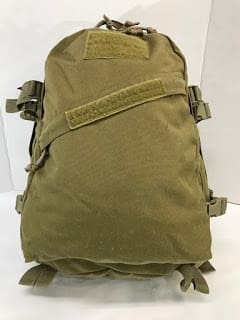 (fashioned version Eagle A-III. photograph by way of Steve S.)
(fashioned version Eagle A-III. photograph by way of Steve S.)
i'm a history junkie, so once I all started the hunt for fundamental sources, it grew to be complex to parent the ground reality a few pack which became produced and sold in the a whole lot of lots over its lifetime. I'd come across chatter in tactical apparatus boards that the A-III turned into a knockoff of a Gregory design, so I'd spend time down that rabbit gap. Then i'd hear whispers concerning the infancy of Eagle Industries and its relationship with the armed forces, and drop into a different rabbit hole for a long time.
I caught my first break throughout a dialog with Kory Brown, product designer at Eagle Industries and owner of the tactical equipment outfit Bergspitze Customs. He mechanically interacts with probably the most team of workers who had been at Eagle when Carver became in charge.
He finally walked out onto the sewing room ground at some point in mid-2019 and spoke with some of the customary seamstresses who had labored on the normal 4,000 rectangular foot facility in Webster Groves, MO. She advised him that the primary creation model of the A-III become stitched up in November, 1989.
I had my first simple source!
Carver would ultimately promote Eagle Industries to ATK/Vista after producing large quantities of holsters, backpacks, rifle cases and various items for armed forces and legislation enforcement valued clientele during his stewardship of the business. It grew to become the area leader in tactical gear and the trade common for innovation, durability and functionality. He at last moved on to different activities, opening a brand new company—Atlas 46—in Fenton, MO. This new undertaking produces device storage, device carriage, device organization and personal workwear items, while also presenting industrial design features. They even produce their own edition of the A-III, the A3 Legacy, below the leadership of John's son, Brian.
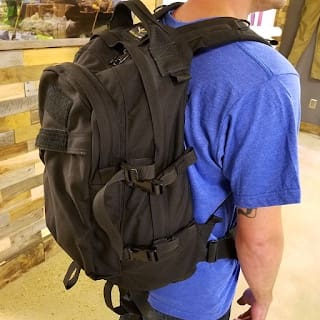 (photograph courtesy of Atlas forty six)
(photograph courtesy of Atlas forty six)
 (picture courtesy of Atlas forty six)
(picture courtesy of Atlas forty six)
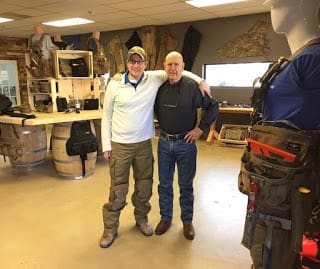 (Brian and John Carver – photo courtesy of Atlas 46)
(Brian and John Carver – photo courtesy of Atlas 46)
The A-III changed into arising on its thirtieth anniversary, however even armed with the date it become first stitched up, I wasn't ready to write up a narrative about it. The on-line debates in regards to the lineage of the A-III remained unresolved and this article ignored the common publishing date, as a result of i needed to know the complete story. a few an expert folks within the trade had commented that the A-III really advanced from a Lowe Alpine techniques design, but they couldn't be aware what the fashioned Lowe pack looked like, or how many modifications had been made to make it meet military expectations. And there have been still the individuals who argued that it advanced from a Gregory pack.
The A-III is big for being probably the most first packs that have been heavily produced for military valued clientele without any design input from a armed forces engineer, as changed into the method from years previous. it is in fact an easy design, regardless of it sparking a revolution in load carriage throughout every branch of the military at the small unit level.
the key facets of the fashioned are:
— A clamshell opening to the leading compartment (about 16" x 20" x 7") which allows for it's opened about three/four of ways by way of twin zippers;
— A sturdy top elevate tackle;
— A 12" x sixteen" x 2" smaller entrance compartment which opens midway down with the aid of its own twin zippers;
— Curved and padded shoulder straps;
— facet compression straps;
— twin, lined openings on the sides of the carry address which were sized to accommodate radio antennae (and finally hydration bladder hoses)
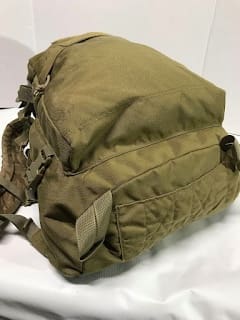 (photograph by way of Steve S.)
(photograph by way of Steve S.)
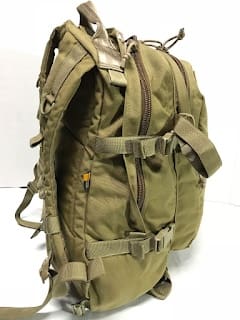 (photograph with the aid of Steve S.)
(photograph with the aid of Steve S.)
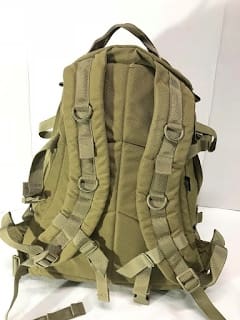 (image by Steve S.)
(image by Steve S.)
A slim, zippered slant pocket at the entrance measures 12" x 16" and is designed for brief access to maps, notebooks and writing instruments. an extended strip of loop velcro runs alongside the higher fringe of the pocket and may be covered with a velcro-backed nametape or luminous tabs. An accompanying square of loop velcro on the face of the pack and a couple of inches above the slant pocket is sized for a flag or in a similar fashion-sized patch. The detachable waist belt is not commonly viewed on fashioned examples of the pack, unless the person is attempting to hold the pack normal to full requirements or carries a lot of weight in it on a daily groundwork.
The back panel on an common is occupied by an elasticized pocket that may hold a body sheet if the user requires a greater rigid form. It worked with various levels of success, depending on the position that the user employed the pack in.
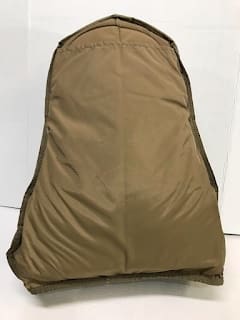 (image by means of Steve S.)
(image by means of Steve S.)
The usual A-III was slick inner and out, however future iterations were produced with an inner webbing array to secure an extended-latitude radio or in a similar way bulky merchandise, along with facet pockets and sections of webbing sewn to the outside to permit for canteens, binoculars, first aid kits, and ammunition to be connected by using smaller pouches. more recent versions had been up-to-date with sections of Pouch Attachment Ladder equipment webbing, to accommodate Modular lightweight Load-carrying machine pouches.
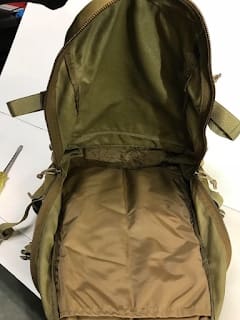 (photo by means of Steve S.)
(photo by means of Steve S.)
An oversized version become ultimately developed with enter from each army and Marine Corps subject count experts, resulting in an airborne edition that could be rigged to a parachute harness. This potential required the design to satisfy a set of exacting safety certification necessities, resulting in a pack that appears markedly different from the original edition.
 (photo credit, Eagle Industries)
(photo credit, Eagle Industries)
Kory Brown confirmed that the A-III isn't at present obtainable for retail sale at the Eagle website. besides the fact that children, SSD said on a likely 3-day assault pack prototype on the Eagle sales space during this 12 months's SHOT demonstrate, so expectantly an up to date edition of the A-III will return to the retail earnings lineup within the near future.
The A-III grew to become a hit among the troops since it changed into attainable in subdued colorations as smartly as the general woodland sample camouflage of the era. It had lashing points at the bottom and its facet compression straps allowed for a wide array of accompanying gear to be connected, giving troops a skill to patrol with it for brief-period operations with out dragging out a typical-challenge pack. It also had a chest strap that changed into superior to anything on the issued packs of the day, making it at the least marginally more comfortable when worn over body armor.

"The Hizara Province" by Elzie Goldman, illustrates use of A-IIIs in the opening years of Operation ENDURING FREEDOM in Afghanistan.
Even I owned an A-III, bought from a postal trade at toes. Story when i used to be a junior member of the united states Marine Corps Fleet Antiterrorism (there is no hyphen) protection crew company at Norfolk Naval Air Station in 1993. I eventually offered it some years later, either for beer or gas money and in no way bought one again. The simplicity and clean strains of the pack caught with me notwithstanding and spurred me to be trained the backstory behind this icon.
After virtually a yr of searching for contacts, nudging Mel Terkla (former lead clothier at Kifaru and existing proprietor of PocketUp) to make an introduction on my behalf to Carver, and varied queries at the Atlas 46 web page, I bought an email all of a sudden that Carver's assistant would refer my queries to him at his Montana domestic. She forwarded my questions to John within the hopes that he could do not forget the A-III's origins story, some thing created over 30 years in the past.
I crossed my fingers and breathed a sigh of relief, notwithstanding ever so a little.
I now had my 2d basic source, and what a goldmine of expertise John Carver turned out to be! He sent me a document which laid out the background as best he may recollect, and it crammed in many of my gaps of potential about the A-III.
Over a series of emails, John laid out how the Eagle A-III came to lifestyles and i grew extra excited that my search should be would becould very well be coming to an conclusion. whereas he admitted that his reminiscence has diminished in patches, John distilled the guidance into a transparent timeline, bringing up a number of of the giants in the tactical gear world and the quiet professionals on the highest tier of american counterterrorism efforts who would use his packs.
John and his mother, Lorene Pyles, started operations in the basement of her St. Louis, Missouri domestic in 1974, where they produced nylon equipment for bike racing, including varied bags, fanny packs, motocross pants, and quite a lot of different packs. by means of 1977, the company become building assault ladder covers for Arnold's Welding carrier (AWS) out of Fayetteville, NC for specialised Tier One militia units and SWAT teams.
His memory gets rather less clear right here, but as he recollects, Lowe Alpine methods turned into a subcontractor to AWS for a pack which AWS in turn bought to satisfy device requirements for the first special Forces Operational Detachment-Delta. i do know there are going to be eye-rolls out there, however yes, THAT Delta. as a result of this branch of the Eagle story now not influences his connections to defense force income, I have no purpose to doubt his statements.
As John recalled, Lowe had moved add-ons of its manufacturing to ireland and will not make their normal pack within the four or 5 colorings that Delta required. They necessary to be produced in black, olive drab, khaki and other refined variants, with a view to no longer resemble a full unit deployment when carried through the operators all through components of a mission. Lowe's minimum order requirements were simply too excessive for Delta to fulfill, because the unit only vital small batches.
Enter bill Arnold at AWS, who contacted John about making changes to the Lowe pack, within the colours that have been required. John did that and the A-III become born. the primary packs had been made with an AWS emblem on it, as a result of Arnold didn't need shoppers to take be aware that he didn't have the in-condo sewing means to fill the purchase order contracts. At John's insistence, the classic Eagle emblem finally found its way onto the pack.

(image by means of Steve S.)
The Eagle A-III begun displaying up everywhere and Eric Graves (proprietor of SSD) recalls that within the early Nineteen Nineties, the black A-IIIs were known as "Ninja bags" by the contributors of U.S. Joint particular Operations Command who have been issued them. different U.S. army particular Forces veterans have recounted to me that their groups were equipped with one or greater of the baggage per every team member. It eventually made its method into the well-known intention forces, post exchanges and base garb income outlets, subsequently fitting a pack that a slew of alternative manufacturers emulated, putting their own slant on the design with side pockets and cosmetic changes.
With every email I exchanged with John, I sensed his delight swelling when he outlined his body of workers at the long-established Eagle facility. He turned into happy to retell the story of a great symbol of yank entrepreneurship and dedication to customer provider. He was remembering the heydays of an outstanding enterprise and good americans.
sadly, the dialogue sent me returned down one other rabbit hole because i used to be left with the core question which I still felt compelled to reply: what inspired the A-III 30 years ago?
Claims with the aid of outside observers that Eagle had copied the Lowe pack nonetheless nagged at me, so I reached out to Lowe Alpine to look what somebody there may say on the remember. i was assisted by way of an enthusiastic gentleman who advised me that Lowe had fallen on challenging instances via mismanagement at a number of facets and turned into purchased by way of the company he now worked for as a consumer provider representative. unluckily, the remaining standing Lowe Alpine equipment employee had left two years in advance of our dialogue and he may not have even had abilities of Lowe's relationship with special operations devices from that era.
i ended the email alternate with the Lowe rep feeling slightly defeated and frustrated. I had come to date, discussing the history of the A-III at once with the former proprietor of Eagle Industries, but turned into now left standing at the base of a really high wall.
I went lower back to John Carver with a number of photos of Seventies and Nineteen Eighties Lowe designs, but none of them jogged his memory. The bag he had been asked to alter by way of invoice Arnold seemed very a great deal like the first A-IIIs which Eagle eventually produced. none of the product images we mentioned came shut sufficient.
On a chilly and wet April day in 2020, I used the collaborative skill of a web chat device to have a dialogue with three giants within the tactical equipment world: Darin Talbot of excessive apparatus Labs, Stephen Hilliard of Blue force apparatus and Eric Graves of SSD.
They knew that I had been on the hunt for the complete story in the back of the A-III and each had contributed a breadcrumb right here and there along my three-12 months path to enlightenment. They also knew my frustrations and had often witnessed the moment when I hit a useless conclusion in a backpack forum, while making an attempt to elicit details on the pack.
As we chatted, I described my conversation with the Lowe rep and Eric began digging into his computer to produce some truly historical catalogs that are actually hosted on vintage outside equipment web sites. He linked within the Lowe catalog from 1988 and flashed an example of a blue pack that became rectangular, but simplest had a number of points comparable to the A-III. We looked at it for a moment however determined it become too distinct to have impressed the Eagle version.
We had a nice chat and that i determined to take a nap, feeling a bit tired from once once more concentrating so complicated on the Lowe angle of my search that gave the look of just one more dead conclusion. before I shut down my iPad, I went lower back to the hyperlink Eric had supplied and began browsing, intrigued with the aid of just what number of bright blue packs Lowe used to make back within the day.
I flipped a few pages, pinched the monitor and zoomed, then flipped yet another few pages. there were a lot of boxy packs made in the late Nineteen Eighties, worn through young backpackers wearing tube socks and really vibrant nylon shorts.
I yawned, flipped a different page after which iced up. It couldn't be. but there it turned into, on web page 15. offered in black and grey and coming in at 2,a hundred ninety cubic inches and a weight of 2 lbs, 14 oz, the unmistakable teardrop shape and slant pocket of the "adventure III" changed into staring back at me.
Lowe adventure III…Eagle A-III. I felt a little like Indiana Jones and went lower back to the chat to share my discovery. each person agreed that I had discovered the ancestor to the A-III, and the connection turned into now indisputable, settling all the forum debates as soon as and for all.

(supply:1988 Lowe Alpine catalog hosted at Larsonweb.com)
I emailed a picture off to John Carver immediately and he concurred that I had ultimately discovered it.
So what have I learned along the way during this three-yr excursion into the history of a pack that became an icon, surviving for over 30 years and continuing to be held within the optimum of regard by means of veterans who own one?
John Carver and his ancient Eagle team are one other illustration of what i admire to name "elementary patriots". They delivered a product that met the customer's wants and have become an instance of yank manufacturing alongside the style. heaps of yankee warriors went to war with this pack slung over a shoulder, conducted fight missions and used it all the way through their off-obligation hours when they were safely lower back at home.
John closed one in every of our e-mail conversations through adding a notice that each modern gentle items manufacturer should still observe:
"hearken to the customer, build what he asks for, construct it to final and sell it at a good fee."
The A-III lives on because a vital patriot listened to his consumer.
I want to thank each person who reads this article and knows that they assisted me along the style, even in what they may additionally have thought turned into a minor aspect. It should not have been possible devoid of your insight and patience.
Jon Custis is a veteran Marine infantryman who writes on quite a lot of tactical machine, practising, and management subject matters.
No comments:
Post a Comment